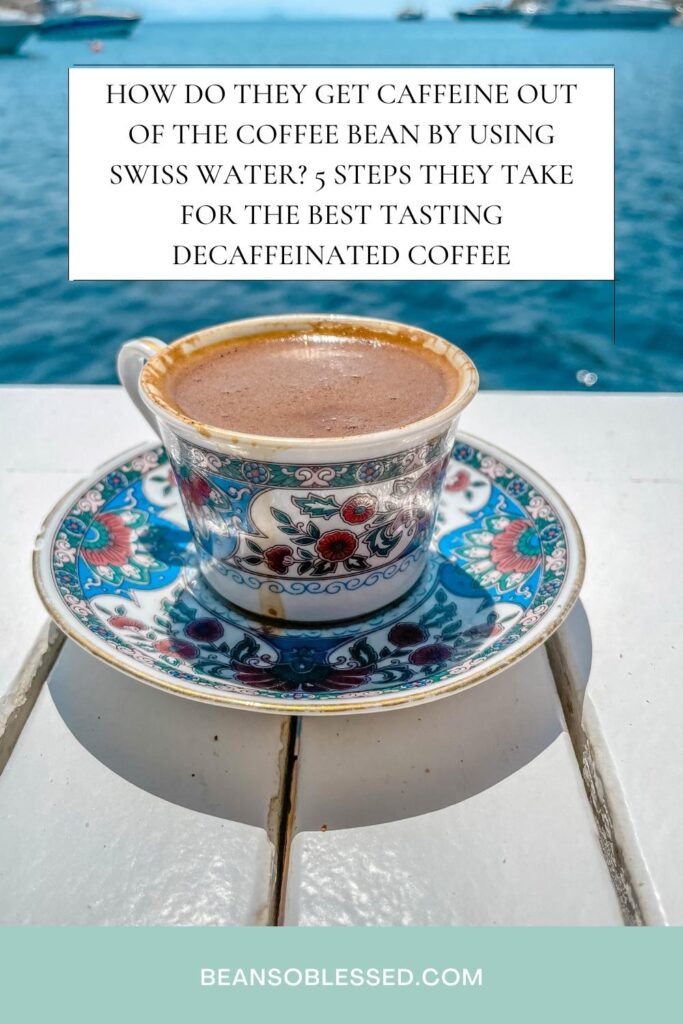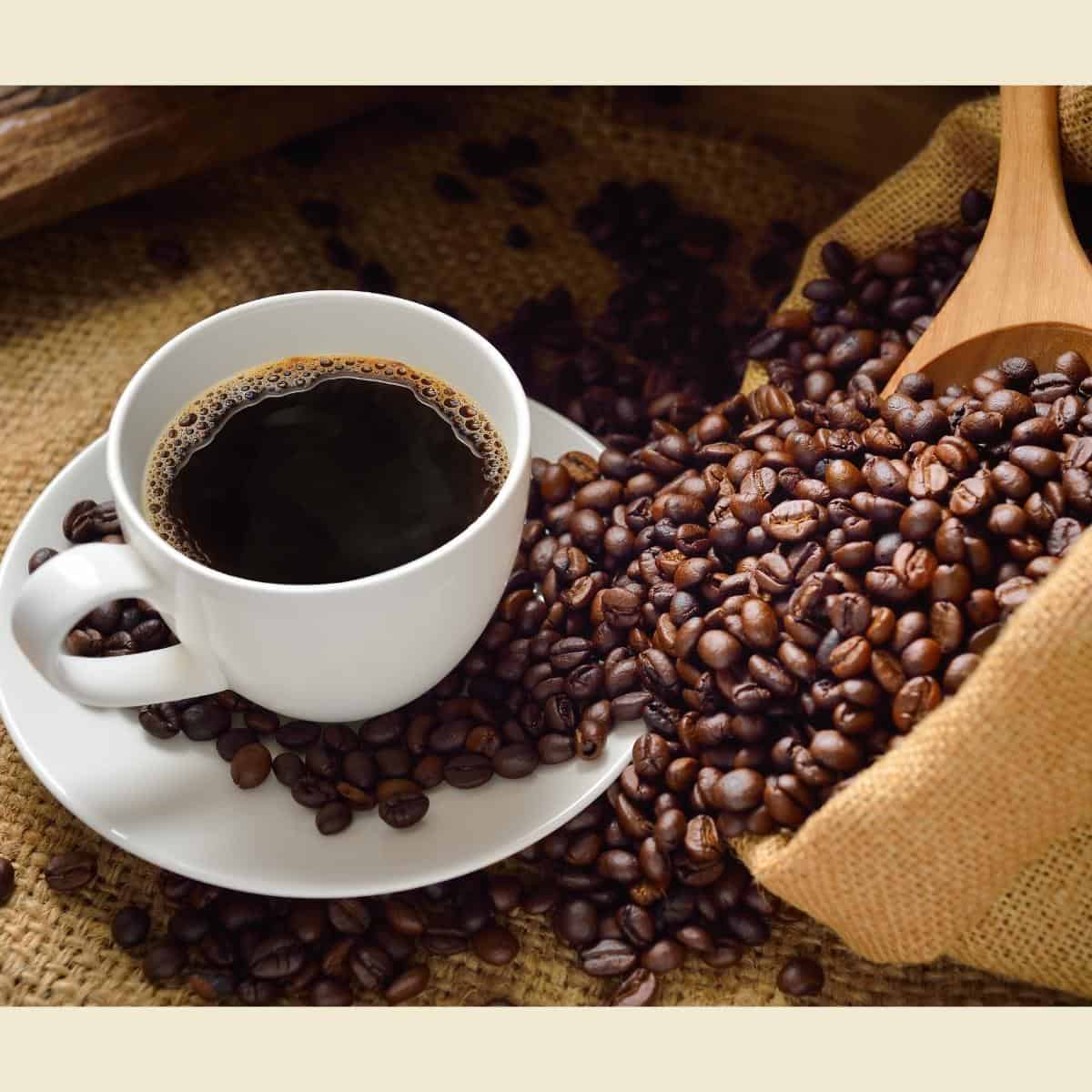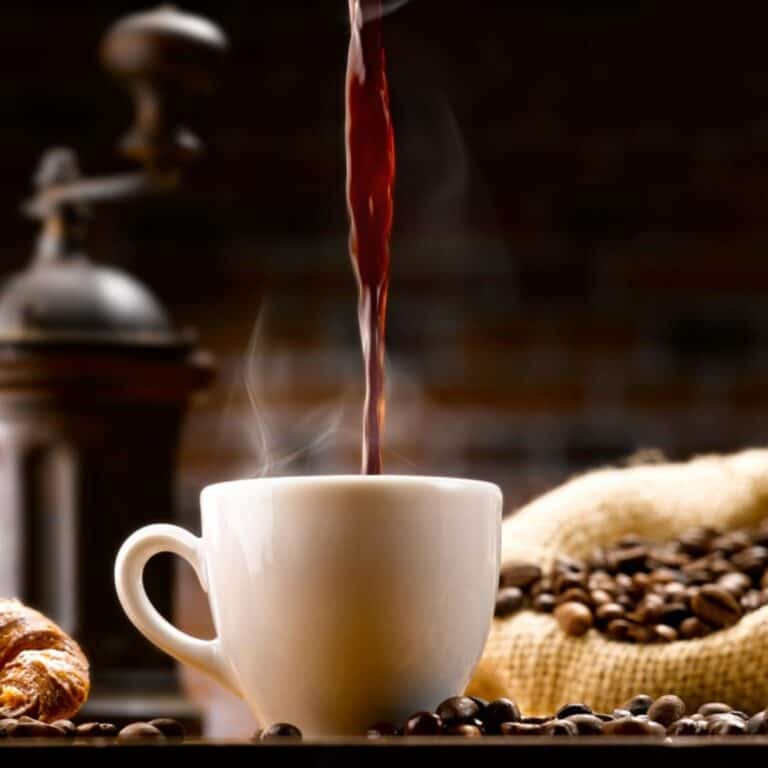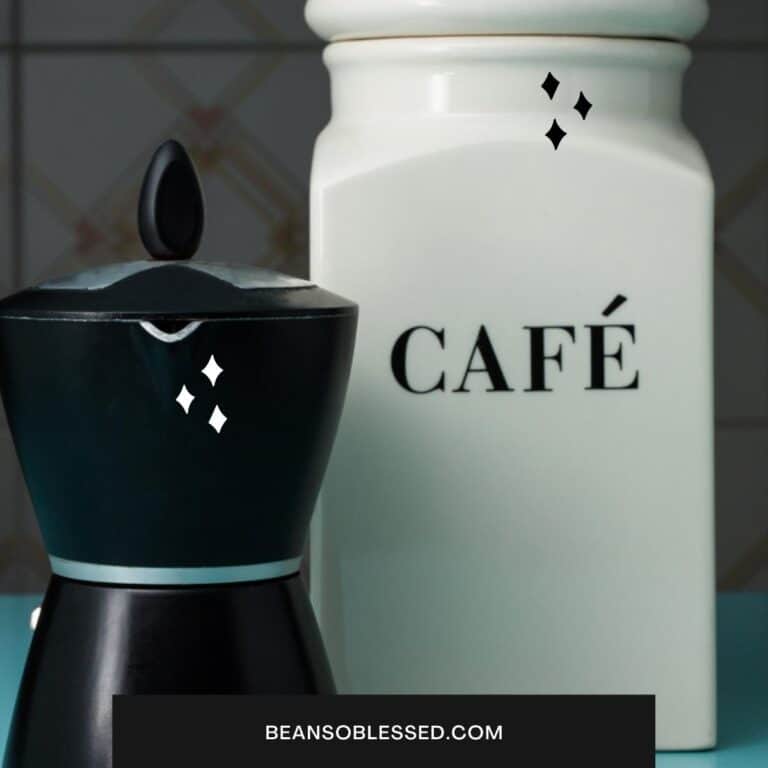How Do They Get Caffeine Out Of The Coffee Bean By Using Swiss Water? 5 Steps They Take For The Best Tasting Decaffeinated Coffee
Do you like a good cup of decaf coffee? If you do, then you’ve probably wondered how they get the caffeine out of the coffee bean. Turns out, there is a special process that they use called Swiss water. Let’s take a closer look at what this process involves and why it’s so effective at removing caffeine from the beans.

At Bean So Blessed, we’re dedicated to providing our clients with the best possible product. That’s why we only find the Swiss Water Method to decaffeinate our coffee. This chemical-free process ensures that there is as little intervention as possible in the taste of the coffee so that it retains its unique original flavors and characteristics.
Their operators monitor the decaffeination process 24/7 to make sure that all coffee that goes through their facility is 100% seamless and traceable. And, unlike many other methods, their process leaves all certifications intact. As a final step, every coffee they decaffeinate is cupped and given a side-by-side analysis comparing pre- and post-decaffeination states. This allows them to ensure quality control and superior decaf flavor. So when you choose Bean So Blessed coffee, you can be confident that you’re getting the best possible product.
1. The GCE is created only once, by soaking the beans in pure water
If you’re a coffee lover, you might be interested in learning about how green coffee extract (GCE) is made. Unlike the coffee that you drink every morning, GCE is made only once, by soaking beans in pure water. This process is known as decaffeination, and it results in a coffee that is 99.9% caffeine-free. The decaffeinated beans are then ground into a fine powder, which can be used to make a variety of products, including supplements and cosmetics.
While the GCE manufacturing process is relatively simple, it’s important to note that only Swiss water can be used to create the extract. This type of water has unique properties that allow it to safely remove caffeine from coffee beans without damaging their flavor or aroma. As a result, Swiss water-based GCE is considered to be the highest quality on the market.
2. Coffee is prepared for the swiss water process
Decaffeinating coffee is no easy feat- but it’s worth it for those of us who enjoy the taste of coffee without the effects of caffeine. The first step in decaffeination is to rehydrate the green coffee beans. This not only prepares them for the target moisture level for caffeine removal, but also removes dirt, dust, and silverskin.
3. Caffeine is drawn away and filtered out
The Swiss Water Process is a decaffeination method that uses only water from the province of British Columbia, Canada. This water is continually circulated around the green coffee for a period of 8-10 hours. Until there is no more than 0.1% caffeine remaining in the green coffee. The caffeine is removed from the GCE through a proprietary carbon filter system, and the carbon is sent to a regeneration furnace to burn away the caffeine so that it can be reused. The Swiss Water Process was developed in the 1930s and has been in use since the 1980s. It is a safe and effective way to decaffeinate coffee.
4. The GCE is reused
Decaffeination is the process of removing caffeine from coffee beans. The most common method is to soak the beans in water, which extracts the caffeine. The water is then removed and refreshed with a new batch of water. This process is repeated until the beans are sufficiently decaffeinated. The swiss water method is a decaffeination process that uses only water and osmosis to extract the caffeine.
This method is often considered to be more gentle and effective than other methods, such as using chemicals or steam. during decaffeination, the GCE is constantly being refreshed and renewed. they also monitor the health of the GCE to ensure it can continue to operate at its best. this way they don’t need to create a new batch of GCE for every new batch of green coffee.
5. Once the coffee is decaffeinated, it begins its journey to the customer.
Swiss Water Decaf coffee beans go through a careful and unique decaffeination process that results in some of the best-tasting decaf coffee on the market. First, the beans are soaked in hot water to release their caffeine. Then, they’re passed through a charcoal filter that removes much of the remaining caffeine. Finally, they’re reintroduced to a solution of water and coffee solids, which helps to restore their flavor and body.
This process usually takes about 10 hours, and when it’s complete, the beans are 99.9% caffeine-free. From there, they’re dried, bagged, and shipped to customers with care. Thanks to the Swiss Water decaf process, coffee lovers can enjoy all the flavor of their favorite brew without the jitters!

The benefits of drinking decaf coffee
For coffee lovers who are looking to cut down on caffeine, decaf coffee is a great option. Decaf coffee goes through a special process to remove the caffeine, while still retaining the rich flavor and aroma of regular coffee. One of the most popular methods for decaffeinating coffee is known as the Swiss water method. In this process, green coffee beans are soaked in water to extract the caffeine.
The water is then passed through a charcoal filter to remove the caffeine. The beans are then soaked in the same water again, which helps to restore their flavor. As a result, decaf coffee is virtually indistinguishable from regular coffee in terms of taste and smell. For people who are looking to enjoy all the benefits of coffee without the caffeine jolt, decaf is a perfect choice.
How to make your own swiss water at home
Making your own swiss water at home is easier than you might think. All you need is a coffee maker and some filtered water. Simply brew a pot of coffee using your coffee maker, then pour the coffee into a container filled with filtered water. Let the mixture sit for 24 hours, then strain the coffee grounds from the water. The resulting liquid is your swiss water! You can store it in the fridge for up to two weeks.
Recipes for delicious decaf coffee drinks
While there are many methods of brewing decaf coffee, the swiss water process is widely considered to be the best. This method uses only water and coffee beans, and it results in a cup of coffee that is virtually indistinguishable from its caffeinated counterpart. If you’re looking to cut back on caffeine but still enjoy a delicious cup of coffee, here are some recipes to try.
For a rich and flavorful cup of coffee, try the French press method. Simply add coarsely ground coffee and hot water to a French press, and let it steep for four minutes before pressing the plunger. For a lighter cup of coffee, try brewing with a pour-over cone. This method requires more patience, but it’s worth it for the delicate flavor of the resulting coffee. And for those who want their caffeine fix without any coffee flavor, swiss water decaf is a perfect choice. Simply add water to your desired percentage of grinds and let it brew for five minutes. No matter which method you choose, you’re sure to enjoy a delicious cup of decaf coffee.
Wrapping it up
Swiss water is a decaffeination process that uses pure water and coffee solvents. It’s considered the best method of decaffeinating coffee because it doesn’t use any chemicals or harsh processes that can affect the flavor of the coffee. The end result is a cup of delicious, smooth, chemical-free decaf coffee. If you’re looking for a healthier caffeine alternative, or just want to enjoy a cup of joe without all the jitters, give swiss water-processed coffee a try. You won’t be disappointed. We have some great recipes for delicious decaf coffee drinks that will keep you coming back for more. What’s your favorite way to drink decaf? Thanks for reading!






